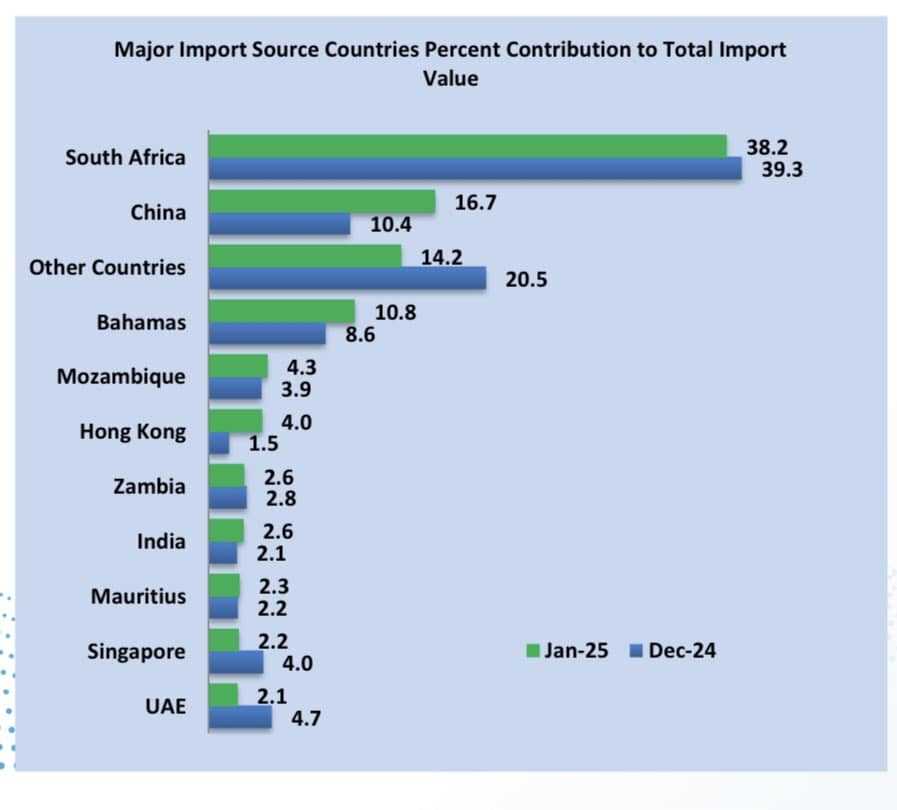Zimbabwe's Import Trends Shift in January 2025: A Focus on Sustainable Trade
By Witness Runodada, Africazine Contributor
In a surprising turn of economic events, Zimbabwe has experienced a notable decline in its import bill this January 2025. The total imports for the month stood at US8.8 million, a significant drop from the US9.7 million recorded in December 2024. This shift underscores the country’s ongoing economic adjustments and evolving trade patterns, as reported by the Zimbabwe Economic Review.
Despite this decline, Zimbabwe’s economic landscape remains deeply interconnected with its regional partners. South Africa has once again emerged as the leading trade partner, accounting for an impressive 38.2% of total imports. This relationship proves vital for Zimbabwe, as it continues to rely on South Africa for essential goods such as machinery, food, and fuel, solidifying its status as a cornerstone in Zimbabwe’s supply chain.
China, renowned for its robust industrial production capabilities, ranks second, contributing 16.7% to Zimbabwe’s imports with a diverse array of goods, including industrial equipment and consumer electronics. This partnership strengthens Zimbabwe’s industrial and technological backbone, showcasing the importance of globalization in today’s economy.
Interestingly, the Bahamas has taken the spotlight as the third-largest source of imports, representing 10.8% of total imports. This surge is largely attributed to fuel and petroleum imports, as the Bahamas acts as a key hub for refined fuel exports. This new development opens up conversations about diversifying trade sources, which is vital for economic resilience.
Following closely, Mozambique accounts for 4.3% of imports, providing energy products and agricultural commodities while also serving as a critical transit point for goods entering Zimbabwe. The collaboration with Mozambique is essential for bolstering food security and energy sustainability.
Together, these four countries—South Africa, China, the Bahamas, and Mozambique—constitute nearly 70% of Zimbabwe’s total imports in January. This reliance on key trading partners highlights the need for Zimbabwe to strategically diversify its trade relationships for a more stable economic future.
The month-on-month decrease in imports can be attributed to several factors, including seasonal demand fluctuations as businesses adjust their stock levels post-festivities, the availability of foreign currency which influences purchasing power, and proactive policy measures aimed at stimulating local production. These efforts are in alignment with the government’s ambitions to reduce dependency on imports and bolster domestic industries.
As Zimbabwe navigates these economic waters, the focus remains on fostering sustainable trade partnerships that will ultimately benefit its economy and enhance resilience against global market fluctuations.
#Zimbabwe #SouthAfrica #China #Bahamas #Mozambique #BusinessNews #Economy #Trade



